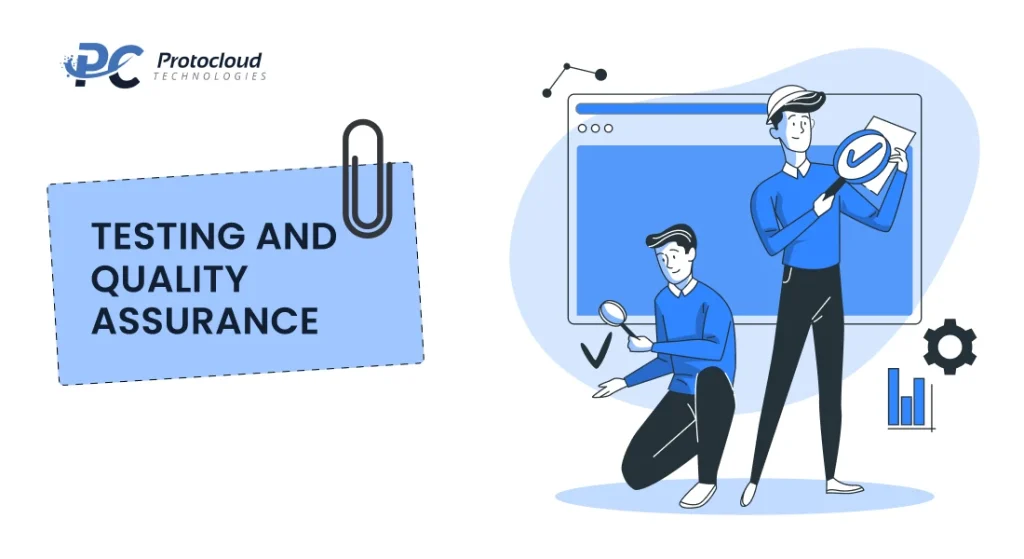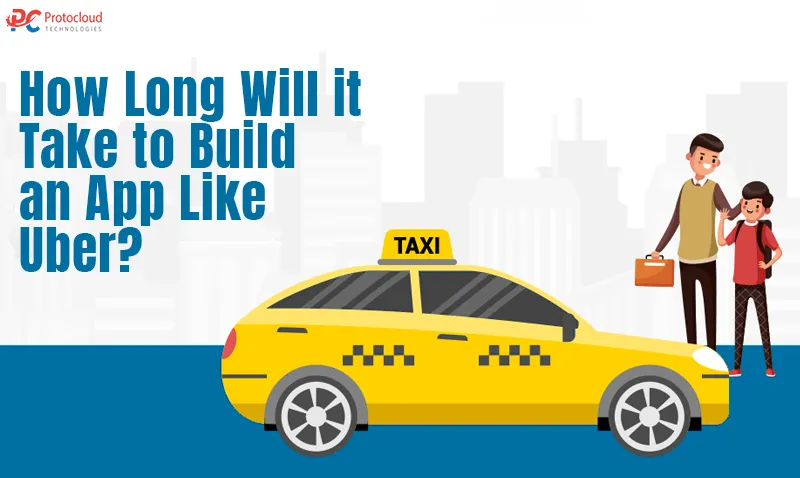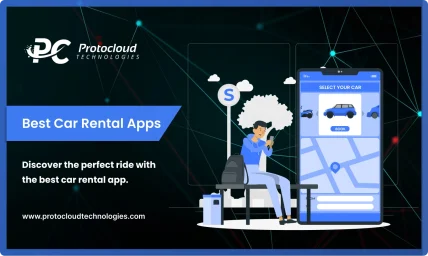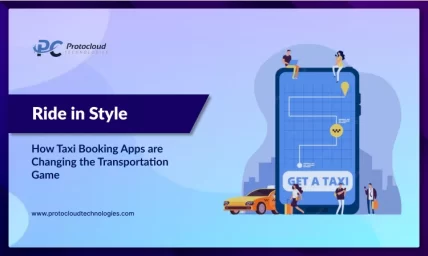It has been many years since taxi booking apps have dominated the market, and their popularity is still massively growing.
Traditional cab providers couldn’t agree more that their business is declining.
Taxi apps like Uber have solved many problems like:
- Cab refusal
- Overcharging
- Nuisance
And cab apps are meeting every potential passenger’s needs.
We know that,
Many of you are here to know the exact price of the taxi booking app development.
Let us clarify,
The cost of the taxi booking application depends on the set of features and how much third-party integrations the app has.
But, before developing an Uber-like app
In this blog,
You will know the business model, Cost, global software rates, technology stack, and how much time it takes to develop an app?
So now,
Let’s explore in detail the various taxi mobile app development essentials.
What is The Cost of Developing an taxi booking App like Uber?
The development process Uber-like app starts with making a minor workable product.
MVP holds the taxi booking application for both supply and demand and the dashboard, but with restricted functionality.
For example, the first release of the Uber app didn’t contain many features and functionalities that it has at the current time.
But, it accommodated connecting drivers and customers and enabled them to make payments directly from the application.
After the first version is released, you can test the strength of the idea and market facilities.
You can add features once the app is in the market and performing well.
Uber app development cost depends on many factors and features that you want to add to the app.
Anyway, a set of parameters and required time for the work can be considered and calculated at the early stages of development.
The table below shows the average time for every stage of work.

Capitals for the project are divided as follows:

Still, how much does the app mobile cost?
Well, it depends totally on the taxi app development company’s standards and charges.
According to the average rate changes according to the location:
- North America — $60–250 per hour
- United Kingdom — $60–150 per hour
- Western Europe — $40–120 per hour
- Eastern Europe — $20–100 per hour
- India — $10–80 per hour
Global Software Development Rates
The country of the development team is not the only thing that influences the overall expenses required to make an app like Uber.
The team size, duration of engagement, tech stack, and experience is equally essential.
Nevertheless, the truth is that the closer the team is to the United States or Western Europe, the more expensive their services will be.
An entrepreneur may charge twice for the mobile app development services delivered by a team in the United Kingdom or the USA instead of the outsourced development.
Thus, a software engineer in the U.K. may, on average, charge $110 hourly, while an hourly rate of a developer in the U.S. may be as high as $90-210.
- The United States and Canada $50-250
- Western Europe & UK $50-150
- Eastern Europe $20-50
- India $8-20
- Australia $50-150
How to Reduce Taxi App Development Costs
After getting an estimate of the cost to build a taxi booking app (similar to Uber, Ola, or Careem), the next big question is: how do you reduce the development cost without compromising quality?
Whether you’re an entrepreneur or a company planning to launch a taxi app, smart planning and resource optimization are key. Below are proven strategies to cut down costs while still developing a high-performing application:
1. Keep the Admin Panel Simple
A feature-heavy admin dashboard can increase costs significantly. To save money, start with only the essential features like:
Payment tracking
Ride and driver management
Passenger profiles
Additional features can always be added later once the app gains traction.
2. Avoid Over-Customization
Custom designs, animations, and advanced navigation may look attractive, but they also drive up expenses. Stick to standard, ready-to-use features in the initial stages to manage costs better.
3. Choose Cross-Platform Development
Instead of building separate apps for iOS and Android, consider cross-platform frameworks like React Native or Flutter. This way, you create a single codebase for both platforms, reducing development time and cost.
4. Start with an MVP
A Minimum Viable Product (MVP) approach helps you launch faster and test the market. Your MVP should include only the core features such as:
Ride booking
User registration
GPS tracking
Payment integration
Basic admin panel
5. Use Cloud-Based Backend Services
Setting up your own servers can be expensive. Rather than building costly servers, consider leveraging cloud platforms like Firebase, Google Cloud, or AWS. They allow you to scale easily while keeping backend development and maintenance costs lower.
6. Optimize Testing with Automation
Manual testing across multiple devices can be costly. By using automated testing tools, you save both time and money while ensuring your app runs smoothly on different devices and operating systems.
7. Leverage Third-Party APIs
Third-party API integration accelerates development and enhances the user experience. For example:
Payment gateways: Stripe, PayPal, Razorpay
Maps & navigation: Google Maps
Notifications: Firebase Cloud Messaging
While some APIs come with fees, they’re often cheaper than building these features from scratch.
8. Outsource Development
Hiring talent from budget-friendly regions can be an effective way to minimize expenses.
North America – $100 to $250/hour
Western Europe – $50 to $150/hour
Eastern Europe – $30 to $75/hour
India & South Asia – $15 to $50/hour
You can also work with freelancers or small teams for specific parts of the project, depending on complexity.
Taxi App Development Process And Technology Stack
1) Native Development (Android and iOS)

The purpose of the on-demand services, in particular, is to satisfy the requirements of as many customers as possible.
When it comes to taxi booking mobile applications, companies should consider the chance of developing an app for both iOS and Android users.
Not just passengers, this app will also be used by the drivers.
So, it is in the company’s interest to draw many users and service providers by giving them an app working reasonably well on different operating systems.
Native apps provide better responsiveness, faster performance, and the best security.
The 2 tech stacks needed to come up with Taxi booking app solutions are the following:
iOS: Objective C and Swift (Programming Language), Xcode (IDE)
Android: Kotlin & Java(Programming Language), Android Studio (IDE)
2) UX/UI Design

Companies improve their chances of finding and reaching their targeted customers by creating high-quality native apps for iOS and Android platforms.
But still reaching out to the customers does not mean providing them the reasons to stay.
The factors that help an app stay in the market are its visually pleasing user interface and flawless user experience.
3) Backend Development

The taxi booking app is at the center of a so-called taxi booking process.
The advantages of produced and used data will be enormous, directly addressing effective data organization and management.
Consequently, the backend of a cab app should offer a link to data sources and reservation data, a connection with payment services, and various communication means.
Implementing standardized information interface, backend systems blend different data and link it to drivers’ and customers’ user interfaces. Processing this data can pose a complex challenge since it is recovered from various sources and sometimes develops quickly in real-time.
These are some examples of technologies likely taken advantage of when working on an app backend:
Databases: PostgreSQL, MySQL, Cassandra, Schemaless, Riak
Languages: Java, Python, Node.js
4) Web Development

Essentially, web development is required to create a web-based admin panel.
This panel allows an administrator to control all the processes on the applications for drivers and customers.
The administrator has constant access to the app’s admin panel, which lets them enjoy full rights and gives permissions to manage registered users.
When making an admin panel as a web application, a software engineer can use Python and its open-source web framework, Django.
5) Testing and Quality Assurance

To ensure error-less delivery of the services, software testing is needed.
We have to organize quality assurance activities and organize testing wisely.
The profit increases when a quality assurance team collaborates with developers, project managers, UX/UI designers, trust builds, and customer support team members.
Additions, like attaching new features or modifying existing ones, must be testable and tested.
Upon finding issues that are to be solved, you need to prioritize them.
For instance, the top advantage is finishing a ride, which prohibits drivers from doing their job well or increases difficulties in estimating fares correctly.
Also, doing some automation increases stability remarkably when sizing up.
The same goes for testing.
Assuring that sudden failures are fixed as quickly and efficiently as possible is the core of providing an excellent user experience on a taxi booking app.
6) Project Management

We have to remind you that everything should be in its proper place at the correct time despite what type of app you are making.
This system does not emerge from wherever.
It is the result, a product of proper planning and execution done by a project management team.
The project’s fate is defined by the decisions taken in the past by the product management team.
They have to develop a plan clarifying all the what’s and how’s at the very start.
Later on,
Who’s and when’s are determined.
What’s: Goals of taxi app development and expected sales volume and market share.
How’s: A technology stack, production, and technical skills, a process of entering a target market (drivers and passengers), agreement with rules and regulations (e.g., taxi driver licensing.)
Who’s: Human resources management.
When’s: Delivery terms and reporting.
7) Technical Support
 It is the case for the tertiary industry.
It is the case for the tertiary industry.
There are always clients who have problems with a product or a service.
In the ordinary course of events, businesses that provide this service must also offer technical support.
Online chats, support forums, telephone calls, and email are the principal means for clients to give feedback.
So, customers are available to communicate what problems they have with the app.
The technical support staff is right here to collect information about issues, examine them, find resolutions to major technical problems, or receive new ones to moderately complex issues emerge.
How Long Will it Take to Build an App Like Uber?

Companies that develop taxi booking apps are all very similar.
There are many different technologies that every company uses to stand out from other companies in the market.
These are essential features and activities set to make a straightforward taxi Booking app solution for Android and iOS.
1) Native Development (Android, iOS)
- User registration, a login page, user profiles: 120 hours
- Notifications: 50-55 hours
- Cab booking: 65-85 hours
- GPS-based vehicle tracking: 45-55 hours
- Payment integration: 100-115 hours
- Fare calculation: 10-20 hours
- Booking history: 35 hours
2) UX/UI Design: 180-190hours
3) Backend Development: up to 200 hours
4) Web Development (an admin panel): 175 hours
5) Testing and Quality Assurance (QA): a third of the total time spent on app development
Summing up, the entire process of developing a taxi app for both passengers and drivers for Android and iOS, making a web-based admin panel and a backend, and implementing a quality assurance process might take up to 1000 hours.
Conclusion
So these are the factors that affect the cost of taxi app development.
This process does take a tiny bit of additional work.
But once you understand this process.
It will be effortless for you to make the budget and plan according to that budget.
Once you finish this blog
You will now know
- How much does it cost
- How much time does a company take to build a mobile app?
Now that you understand everything
Let me know by leaving a comment below right now.

Do You Want to Create a Taxi Booking App But Don’t Know What To Do Next?
- Schedule a call – Our senior developer will connect with you on a zoom or skype call.
- Discuss your project – Share your app details with our expert. He will understand and suggest the best solution.
- Sign NDA – Your project will be secured by NDA agreement. 100% Secure.





Leave a Reply